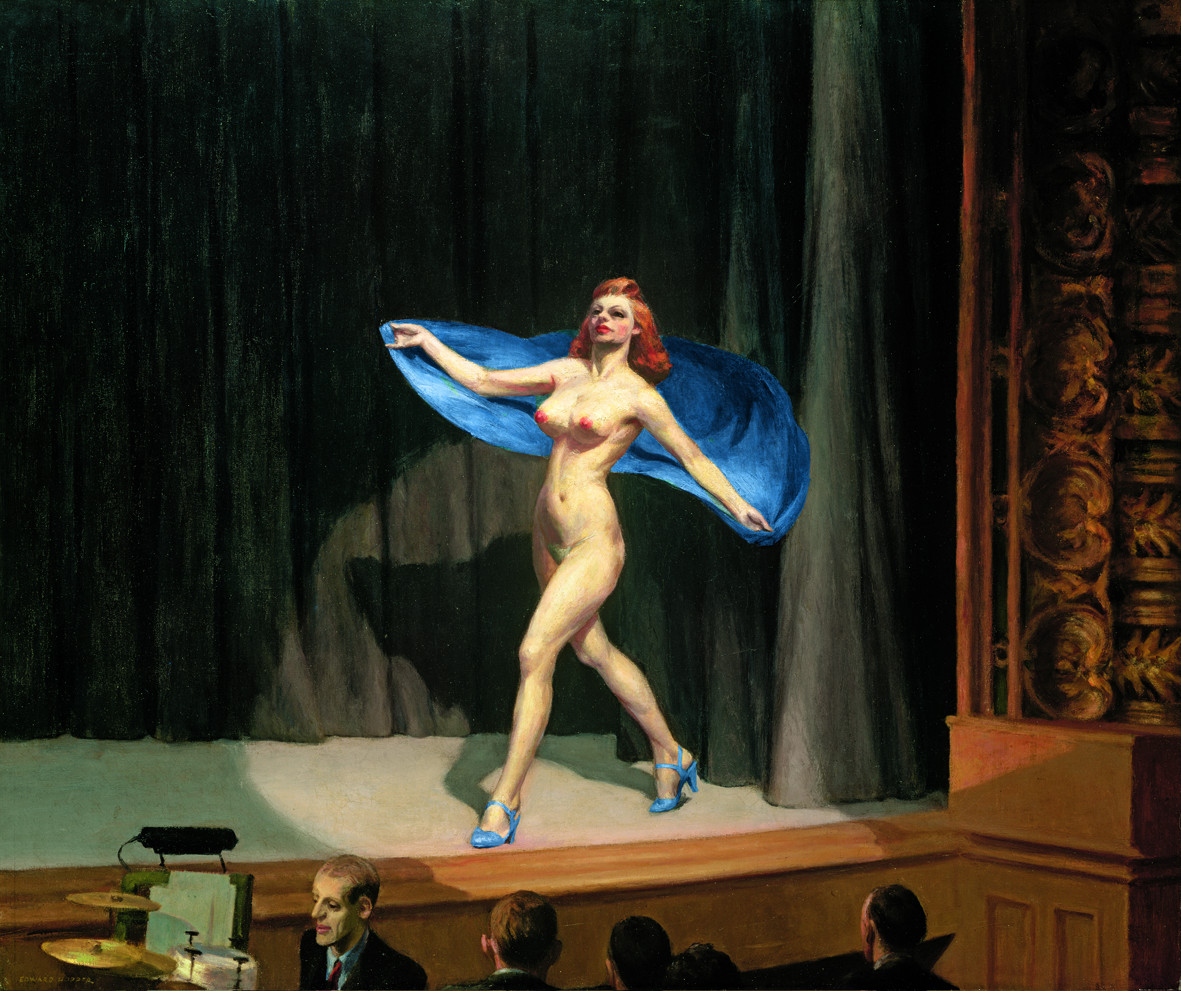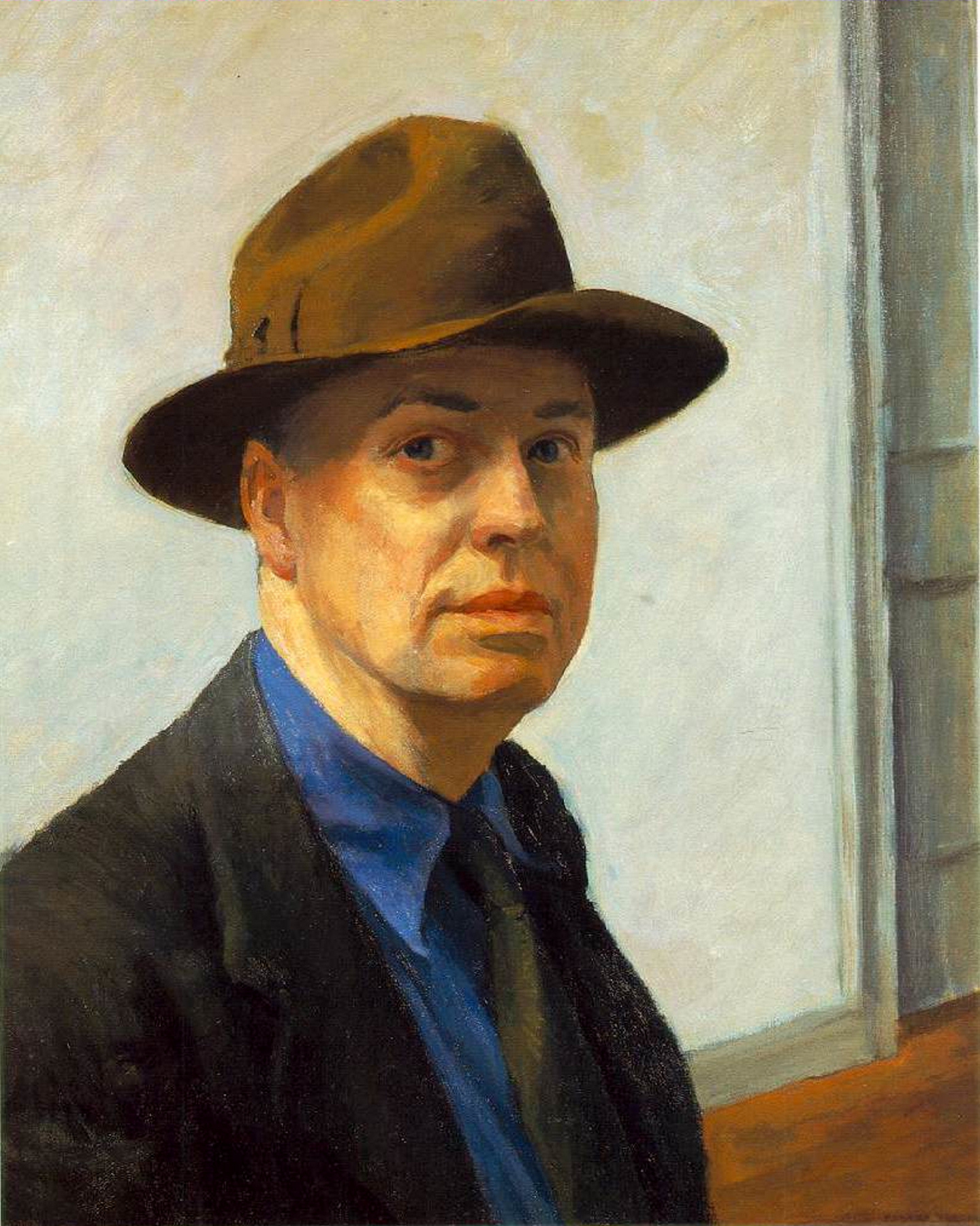After his student years, Hopper's nudes were all women. Unlike past artists who painted the female nude to glorify the female form and to highlight female eroticism, Hopper's nudes are solitary women who are psychologically exposed. One audacious exception is "Girlie Show," where a red-headed strip-tease queen strides confidently across a stage to the accompaniment of the musicians in the pit. Girlie Show was inspired by Hopper's visit to a burlesque show a few days earlier. Hopper's wife, as usual, posed for him for the painting, and noted in her diary, "Ed beginning a new canvas — a burlesque queen doing a strip tease — and I posing without a stitch on in front of the stove — nothing but high heels in a lottery dance pose."
Jo modeled for all the women in Hopper's paintings. She also joined him in naming and fantasizing about the characters in his paintings. She thus played a crucial role in the rich drama of his imagination, assisting him in transforming her image into one of his fantasy. A former actress, Jo enabled Edward to function like a director giving a favorite actress many roles to play. She also assisted him by shopping for the exact props he wanted to set up his pictures. For example, Jo could appear young or old, seductive or disinterested. The eroticism of "Girlie Show," a painting of a burlesque stripper with conical breasts and bright red nipples who teases her audience by waving a blue garment she has already removed, is both obvious and intentional. The preparatory sketches reveal how Hopper transformed Jo's petite form and aging features to that of the tall sultry redhead in the painting. Hopper, who must have identified with the male figures in the audience, shows this woman as desirable but untouchable, to be observed safely from a distance.
When asked why he selected certain subjects over others, Hopper replied: "I do not exactly know, unless it is that I believe them to be the best mediums for a synthesis of my inner experience. Great art is the outward expression of an inner life in the artist, and this inner life will result in his personal vision of the world.... The inner life of a human being is a vast and varied realm."




Girlie Show
oil on canvas • 32 x 38 in
 Edward Hopper
Edward Hopper